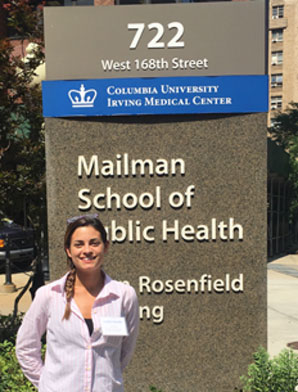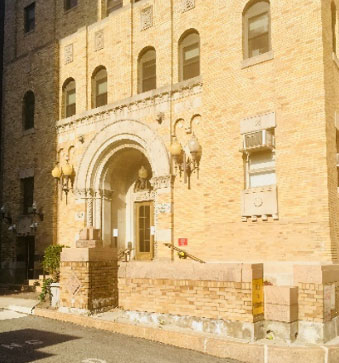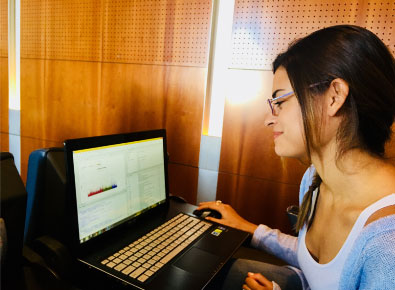 This summer I was able to attend a two-day intensive Environmental Mixtures Workshop at Columbia University thanks to the Supplemental Training for Education Program (STEP). The Mixtures Workshop was hosted by Columbia University’s Department of Environmental Health and Sciences in the Mailman School of Public Health with additional support from the Society of Toxicology (SOT). This workshop consisted of seminars and hands-on analytical sessions to provide an overview of environmental mixtures concepts, techniques, and data analysis methods used in health studies.
This summer I was able to attend a two-day intensive Environmental Mixtures Workshop at Columbia University thanks to the Supplemental Training for Education Program (STEP). The Mixtures Workshop was hosted by Columbia University’s Department of Environmental Health and Sciences in the Mailman School of Public Health with additional support from the Society of Toxicology (SOT). This workshop consisted of seminars and hands-on analytical sessions to provide an overview of environmental mixtures concepts, techniques, and data analysis methods used in health studies.

The Environmental Mixtures Workshop was led by a team of world experts in environmental health, epidemiology and statistics, Dr. Brent Coull from Harvard T.H. Chan School of Public Health, Dr. Chris Gennings Research Professor and Biostatistics Division Director in the Department of Environmental Medicine and Public Health at the Icahn School of Medicine at Mount Sinai, Dr. Jeff Goldsmith Assistant Professor in the Department of Biostatistics at Columbia University Mailman School of Public Health, and Dr. Marianthi-Anna Kioumourtzoglou Assistant Professor in the Department of Environmental Health Sciences at Columbia University Mailman School of Public Health.

The Mixtures Workshop took place on the Columbia University Medical Campus (CUMC) in New York City, in the Allan Rosenfield Building. I became familiar with Principle Component Analysis (PCA), Factor Analysis (FA), Clustering, Variable Selection (Lasso, elastic net), Bayesian Kernel (BKMR), Weighted Quantile Sum Regression (WQS), along with emerging mixtures topics and novel extensions all while enjoying the beautiful scenery that Columbia University has to offer. Although multiple techniques to analyze exposure to mixtures in environmental health were discussed, the instructors did a fantastic job at helping everyone follow along. Trainees and early-stage investigators at all phases of their careers were encouraged to attend and participate which allowed for a level playing field amongst the participants.

The workshop began with clustering analysis to examine the association between 18 polychlorinated biphenyls (PCBs), 7 dioxins, and 9 furans and leukocyte telomere length (LTL), a biomarker associated with chronic disease, among 1,330 U.S. adults from the National Health and Nutrition Examination Survey (NHANES) 2001-2002 cycle. Algorithms for clustering connect objects, or data points, to form clusters based on their distance, or similarity (the closer they are the more similar they are). Clustering in health models can be used to assess effect modification in the association between one of the mixture members and the outcome of interest. By the time we were running WQS we were able to identify important chemicals in a mixture of correlated environmental chemicals. Regression methods of lasso, adaptive lasso and elastic net were also evaluated in correctly classifying chemicals as “bad actors” or unrelated to the outcome.

The panel discussion at the end of the workshop helped to enhance our knowledge on which method to choose based on the scientific question at hand. For example, shrinkage methods are best used for biomarker identification. PCA and WQS are better used to study mixture effects while BKMR is better for interaction among components. Although Dr. Goldsmith was unable to attend the panel discussion he and the other instructors generously provided their contact information.

Overall the experience I gained at Columbia University’s Environmental Mixtures Workshop was outstanding. My current thesis research focuses on chemical warfare induced skin damage, after completion of my PhD in toxicology at Rutgers University, I plan to pursue a career in dermal toxicology either at a consumer product company or a skin care company. The knowledge I have gained at Columbia will allow me to pursue my goal as a dermal toxicologist where I will be able to assess risk related to not just one but multiple pollutants and products that an individual may become exposed to.
I would encourage any student at any stage of their thesis research to apply for a STEP award. The opportunity will allow them to broaden their knowledge in fields that they are unfamiliar with or may not have access to at their university aiding in their future endeavors. The next application deadline for the STEP award is October 9th.
